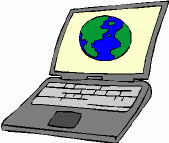
Small Cities Conference April 12-14 at Ball State University
The fifth Small Cities Conference sponsored by the Center for Middletown Studies at Ball State University will be held in Muncie on April 12-14, 2007. The theme of this conference will be "The Small City in a Global Context," exploring the history of nonmetropolitan-urban settings. The conference will feature scholars from around the world whose work has addressed the history of the small city. The papers to be presented this year study communities in the United States, Latin America, Europe, Asia, and Africa.
Historian Timothy Mahoney will lead off the conference presentations in the Forum Room of Bracken Library from 7:30 P.M. to 9:00 P.M. on Thursday, April 12. Mahoney's presentation will describe the process of creating a digital small city, "Digital History and the Small City: The Plains Gilded Age City Digital Project." The session will be moderated by Bruce Geelhoed, Chairperson of the Department of History. This presentation is free and open to the public. Other sessions will be held at the E.B. Ball Center on the campus of the Minnestrista Cultural Center.
The Geospatial Center & Map Collection will be presenting a special display of maps related to the cities described at the sessions. These maps will be on display in the windows of the GCMC, located just outside the Forum Room at Bracken Library.
For more information about the Small Cities Conference and a complete schedule of events, please visit
www.bsu.edu/middletown/scconference or contact James Connolly, director of the Center for Middletown Studies at (765) 285-8037.
 Printing from Laptops Available at University Libraries
Printing from Laptops Available at University Libraries




